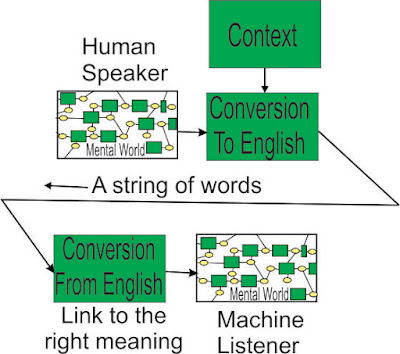Expanding the Vocabulary of a Semantic AI System
We now have
a 45,000 word vocabulary, and 10,000 wordgroups, but it is still not uncommon
to encounter ten or so new words when reading a piece of text (a column from
the NYT, or a new technical breakthrough – not a new technical area, these are
handled differently). A process running in the background detects the unknown
word, and searches several dictionaries for it. Once found, a file is created
to house the definitions, the appropriate structure is built into the network,
and reading of the text continues. The file is later manually checked for
accuracy and completeness. That is not enough – in a period of rapid change,
words can acquire new definitions, or have their existing definitions radically
changed (in 2025, tariffs as an example). Currently, change of meaning is handled
manually, as waiting on change from the dictionary-makers would be far too
slow. For legislation, which can have a long life, it may be necessary to carry
the old definitions that were in use when the legislation was created.
This
seems a lot of work – is it needed?
A lot of
effort is needed to use the meanings of words – most of that effort goes
unnoticed because humans have no choice but to do it unconsciously, given the
severe limit on their input (the Four
Pieces Limit). If the effort is being made by the machine without a limit,
it seems reasonable to use the right meanings.
Relevance: A way to stop the skulduggery
behind Robodebt (2 suicides, hundreds of thousands traumatised), (British Post Office) Horizon (four suicides, thousands deeply scarred),
and Boeing 737 MAX MCAS (346 dead, a reputation trashed).


Comments
Post a Comment